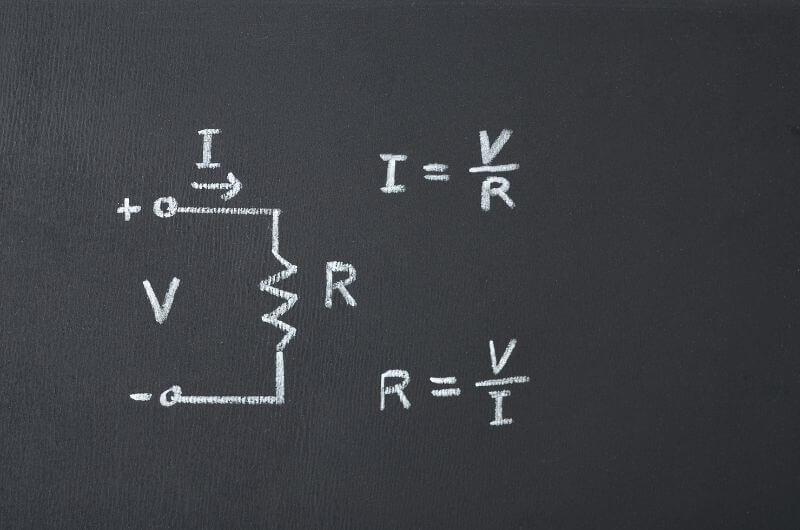What Happens When You Put an Ammeter Across a Battery?
When you put an ammeter across a battery, the current flowing through the battery will be measured. The amount of current that flows through the battery depends on the type of battery and the load on the battery. If you are measuring the current flow from a car battery, for example, you will likely see a higher reading than if you are measuring the current from a AA battery.
Ammeters are devices that measure the flow of electric current in a circuit. When you put an ammeter across a battery, it measures the amount of current flowing from the battery to the ammeter. If the battery is not connected to anything else, then all of the current will flow through the ammeter and you will get a reading of the full voltage of the battery.
Why an Ammeter Should Never Be Placed Across the Battery?
An ammeter is an electrical device used to measure the current in a circuit. It is placed in series with the circuit, meaning that it is connected between the power source and the load. The ammeter measures the amount of current flowing through it and displays the reading on a dial or digital display.
Ammeters must never be placed across the battery because doing so would create a short circuit. Current would flow directly from the positive terminal of the battery to the negative terminal without passing through any other component in the circuit. This would cause an enormous amount of current to flow through the ammeter, damaging it and possibly causing a fire.
Should You Connect an Ammeter Directly Across the Terminals of a Battery?
It is generally considered safe to connect an ammeter directly across the terminals of a battery. And, you can charge your battery own. This is because ammeters are designed to draw very little current, so they will not overload the circuit or cause any sparks that could potentially ignite any flammable gases that may be present. However, it is always a good idea to consult the manufacturer’s instructions before making any connections to ensure that you are not doing anything that could damage the equipment.

An Ohmmeter Connected Between the Battery Posts Will Result In
An ohmmeter is an electrical instrument that measures resistance in ohms. When connected between the battery posts, it will result in a reading of the total resistance of the circuit. This includes the resistance of the battery, as well as any other components in the circuit.
What is the Relation Between the Voltage And the Electric Current?
The relation between voltage and electric current is a bit like the relation between speed and time. Just as you can’t have a high speed without spending some time getting there, you can’t have a high voltage without first generating a current. In both cases, the higher the number, the more energy is involved.
Voltage is potential energy per unit charge, while electric current is the flow of charges per unit time. So if you want to generate a high voltage, you need to create a lot of potential energy difference (potential drop) across a small distance by moving electrons around. The only way to do this is to push charges through a conductor using an electromotive force (emf).
This will cause an electric current to flow, which in turn will generate the desired voltage. Of course, once you have generated a high voltage with your emf source, it won’t stay there forever unless you keep pumping charges into the system at the same rate that they’re leaving (i.e., keep up the current). So in order to maintain a given voltage level over time, you must continuously supply electric current to whatever load is attached across the conductor.
Show How Ohm’s Law May Be Applied in Three Ways Varying Two Factors And Maintaining One As Constant?
Ohm’s Law is a fundamental law of electricity that states that the current passing through a conductor is proportional to the voltage applied to it. The constant of proportionality is known as the resistance of the conductor. This law can be applied in three ways by varying two factors and keeping one constant.
The first way to apply Ohm’s Law is by varying the voltage while keeping the current constant. This can be done by connecting a variable voltage source across a resistor and measuring the resulting current. By plotting voltage against the current, it is possible to determine the resistance of the resistor.
The second way to apply Ohm’s Law is by varying the current while keeping the voltage constant. This can be done by passing a known current through a resistor and measuring the resulting voltage drop. Again, by plotting voltage against the current, it is possible to determine the resistance of the resistor.

FAQs
What Would Happen to an Ammeter When Connected Across a High EMF Battery?
An ammeter is a device used to measure electric current. When an ammeter is connected across a high EMF battery, the current flowing through the ammeter will be proportional to the voltage of the battery. The higher the voltage of the battery, the higher the current flowing through the ammeter.
What Happens If You Connect a Voltmeter to a Battery?
If you connect a voltmeter to a battery, the voltmeter will measure the voltage of the battery. The voltage of a battery is the difference in electric potential between the two terminals of the battery. You may put a bigger battery in your car.
Can You Test a Battery With an Ammeter?
It is possible to test a battery with an ammeter, but it is not the most accurate way to do so. The reason for this is that the internal resistance of the battery will affect the reading on the ammeter. A more accurate way to test a battery is with a voltmeter.
Conclusion
When you put an ammeter across a battery, the ammeter will measure the current flowing through the battery.
Learn More:
- Can You Charge a Lithium Battery With a Trickle Charger?
- Can You Use a Switching Power Supply to Charge a Battery?
- How Long Does a Battery Work After a Jump Start?
- Can You Charge a Dead Battery in Subnautica?
- Should AGM Batteries Be Charged to 100 (It’s Charging Voltage)
References:
